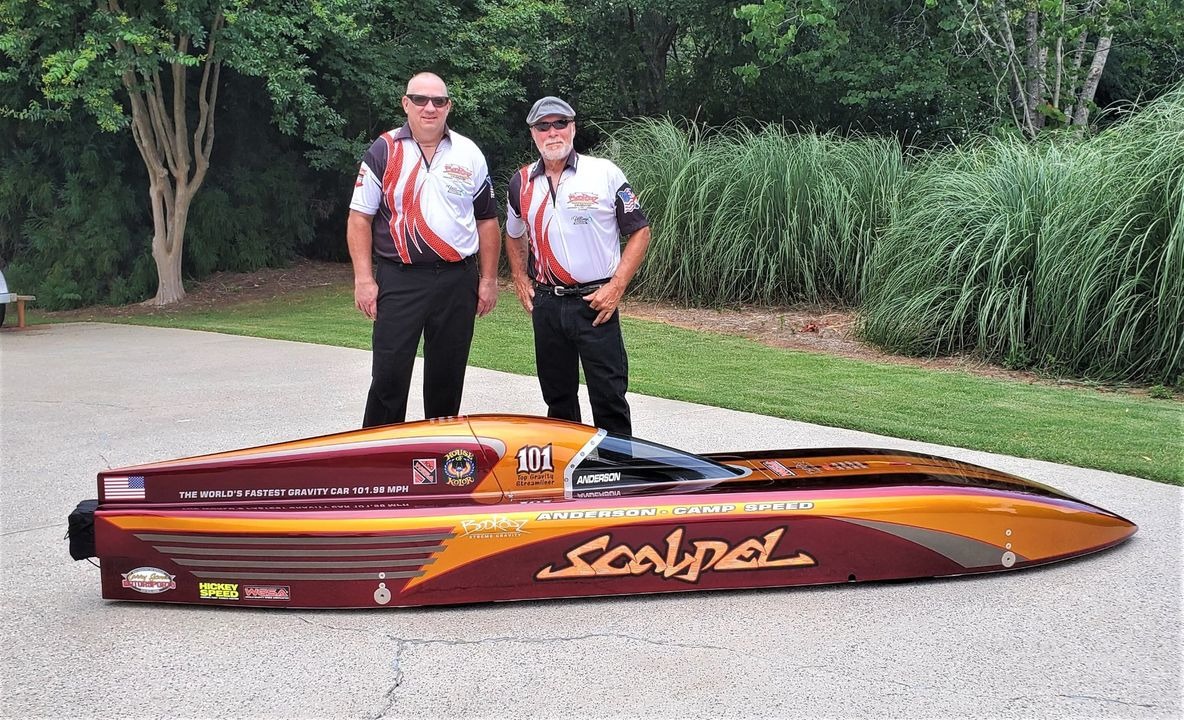

We’ve all heard of The Soap Box Derby. Gravity-powered racing has been a thing since before the derby, probably since prehistoric humans figured out that objects prefer to go down hills. This is another level of non-powered racing cars. Meet the Atomic Scalpel.
Doug Anderson is a retired Delta Airlines technician with a goal: to build the fastest downhill gravity racing machine ever. In an interview with Hagerty, Anderson outlines how he did just that, and went over 100 mph without the use of an engine. It’s an absurd story of dedication, precision, and home-built ingenuity.
The car itself is designed to be as small and streamlined as possible, though not necessarily lightweight. The flat floor is made of mild steel instead of lighter aluminum to lower the center of gravity and provide stability while the car goes downhill. It weighs only 470 lbs with Anderson in it, less than the maximum of 550 lbs stated by the rules.


Structurally, the car uses ultra-strong chromoly tubing to make up a spaceframe while using strategic titanium in critical areas for strength and lightness. It’s also unbelievably small, with the scale of the car hard to understand in photos. It’s designed to fit precisely around Anderson’s 5’8” 190 lb body, and has a calculated staggeringly low drag coefficient of 0.175 with a front area of 520 square inches. A Toyota Prius has a 0.25 drag coefficient.
There was no time to test the car before its competitive debut, taking of five people, including Anderson, to build the car over an entire year. It barely finished getting painted when it debuted at an event in 2017. It was the first gravity racer to break the 100 mph barrier on its first attempt.
There haven’t been any gravity racer events since then, allowing the record to stand. The Atomic Scalpel was retired and donated to the Speedway Motors Museum of American Speed in 2022. Anderson’s story and incredible achievements, however, will stand forever.
Got a tip? Email tips@thedrive.com